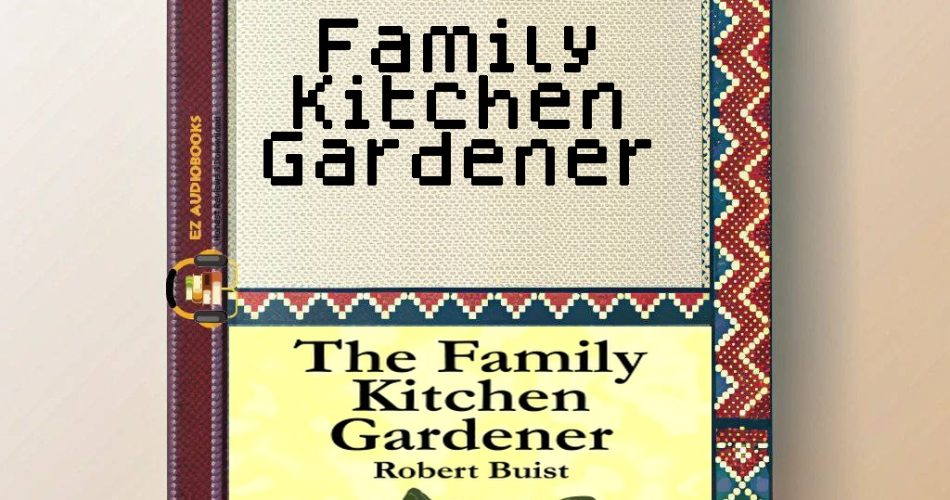Audiobook Sample
Listen to the sample to experience the story.
Please wait while we verify your browser...
- Title: Family Kitchen Gardener
- Author: Robert Buist
- Narrator: LibriVox Volunteers
- Length: 07:48:22
- Version: Abridged
- Release Date: 01/01/2016
- Publisher: LibriVox
- Genre: Health & Wellness, Instructional & How To
- ISBN13: SABLIB9783008
As I pressed play on this LibriVox recording of Robert Buist’s “Family Kitchen Gardener”, I was immediately transported back to my grandmother’s kitchen in rural Hunan, where the scent of freshly picked herbs always mingled with the sound of sizzling woks. This 1847 gardening manual, narrated by the dedicated volunteers of LibriVox, offers more than just horticultural advice – it’s a cultural artifact that reveals how 19th-century Americans related to their land and sustenance.
What fascines me most about Buist’s work is how it occupies a fascinating intersection between practical manual and cultural document. Through a cultural lens, we can read between the lines to understand Victorian-era gender roles (note how the ‘family’ garden implies female domestic management), class aspirations (the detailed glasshouse instructions suggest middle-class ambitions), and the emerging American identity in plant cultivation. The alphabetical organization of plants – from Artichokes to ‘Yam, or Sweet Potato’ – creates a literary rhythm that the volunteer narrators deliver with earnest clarity.
This reminds me of when I first discovered the Japanese tradition of “hanakotoba” (flower language) during my Tokyo fellowship. Just as those floral codes revealed cultural values, Buist’s meticulous descriptions of ‘Early Frame Cucumbers’ versus ‘Field Peas’ expose America’s agricultural priorities in 1847. The LibriVox narrators handle these period-specific terms with admirable precision, though occasional variations in recording quality remind us this is a community project.
The audio experience particularly shines in sections about herb cultivation, where the narrator’s measured pace allows Buist’s advice on thyme and sage to blossom in the mind’s ear. However, the technical passages about soil amendments reveal the challenge of vocalizing dense instructional content – a reminder of how our contemporary podcast culture has reshaped expectations for informational audio.
Compared to other horticultural works of its era, Buist’s manual stands out for its distinctly American perspective. Where Bernard McMahon’s “American Gardener’s Calendar” catered to gentleman farmers, this book speaks to housewives and shopkeepers. The volunteer narrators capture this democratic spirit through their diverse voices, though the lack of professional polish might distract listeners accustomed to studio productions.
For modern listeners, the most valuable sections might be Buist’s surprisingly relevant advice on season extension and crop rotation – concepts my Berkeley students now discuss as ‘sustainable agriculture.’ The descriptions of ‘Hot Beds’ using manure heat could inspire today’s urban compost enthusiasts, while the warnings against ‘foreign varieties’ of cabbage reveal early nativist tendencies in horticulture.
As someone who has analyzed everything from Murakami’s magical realism to the narrative structures of “Cloud Atlas” across different media formats, I’m particularly intrigued by how this audiobook transforms a practical manual into an almost meditative experience. The repetitive structure of plant entries creates a rhythm that feels closer to oral tradition than modern nonfiction.
While the audio quality varies between chapters (a natural consequence of volunteer recordings), this actually enhances the historical texture – we’re hearing Buist’s words through multiple modern voices, much like how gardening knowledge passed orally through generations. The sections on ‘Parsley’ and ‘Strawberry’ benefit particularly from narrators who clearly have personal gardening experience, their voices warming with unscripted enthusiasm.
For contemporary listeners, I’d recommend approaching this as both practical guide and historical performance. Keep a notebook handy when listening to propagation techniques, but also let yourself appreciate how Buist’s language – ‘the soil should be rich, light, and deeply stirred’ – creates its own literary cadence. The free accessibility through LibriVox makes this an ideal companion for actual gardening work, transforming weeding sessions into time-traveling lectures.
In scholarly appreciation of both text and cultivation,
Prof. Emily Chen

